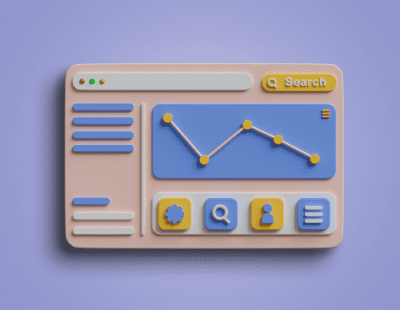The 3 stages of the customer journey, often referred to as the buyers journey, outline the unique challenges that a customer faces at each stage of his decision making process. The content and targeting methods that you use for reaching potential customers will vary at the different stages, and depending on the medium, using both organic and paid platforms.
Why should you be amazed? Well I think that even if you’re not a marketer and are tasked with taking on marketing challenges, the awareness of a customer journey is one of the most eye-opening discoveries, in my humble opinion. If you had an idea of what “content creation” was, you may be surprised that the content and channels in which you target can greatly impact whether a customer converts or not. Understanding and recognizing a buyer’s intent will drive the way you plan your strategies.
Speaking of intent, Google actually includes “Intent” as a 4th stage in the customer journey.

I’ll include more about this fourth stage below as Google Ads and content will be able to utilize this additional stage in the process.
What are these 4 customer journey stages?
1. Awareness Stage: Capturing Attention
The awareness stage marks the beginning of the buyer journey, where potential customers first become aware of a problem or need they have. During this phase, individuals are seeking information, solutions, or inspiration related to their challenges or desires. In paid advertising, the primary goal is to capture the attention of your target audience and introduce them to your brand or offerings.
Example: If a visitor has back pain and is searching for “back pain causes”. The user has not identified the root problem, or the remedy (product or service) yet. Customers may see an Ad or image in organic search, or a blog article.

Key Questions:
Q: What strategies can my business use to grab the attention of potential customers in the awareness stage?
A: Businesses can leverage visually appealing creatives, such as eye-catching images or videos, to grab the attention of their target audience.
Q: How can businesses utilize paid ads to effectively raise awareness of their products or services?
A: Targeted advertising on platforms like social media or search engines enables businesses to reach individuals who are actively seeking information relevant to their offerings.
2. Consideration Stage: Educating and Engaging
Once individuals have become aware of their need or problem, they enter the consideration stage, where they begin to research and evaluate potential solutions. During this phase, consumers are actively seeking information to understand their options and make informed decisions. In paid advertising, businesses need to provide valuable content and engage with their audience to nurture leads and guide them towards a favorable decision.
Example: Continuing with our back pain theme – the customer now decides that they need a physio therapist to help with their now identified issue. Using various platforms, a local search would commence where a buyer looks at proximity, reviews, and content that relates to their search.
Takeaway Questions:
Q: How can businesses tailor their paid ads to provide relevant information and resources to consumers in the consideration stage?
A: Businesses can create informative ad copy and landing pages that address common pain points or questions their target audience may have.
Q: What role do retargeting campaigns play in nurturing leads and encouraging engagement during the consideration stage?
A: Retargeting campaigns allow businesses to re-engage individuals who have shown interest in their offerings, reminding them of the value proposition and encouraging further consideration.
3. Intent Stage: Ready to Buy
As promised, I’ve included this additional “bonus” stage of the buyers journey which Google officially includes in their materials. That’s because it technically sits in the middle of the Consideration and the Decision stages. A user is showing intent when they take some action towards a purchase, but doesn’t yet follow through and can move right back to the Consideration stage.
Examples:
-
- A user adds an item(s) to a shopping cart and doesn’t checkout
-
- They call for a quote or follow-up on one
-
- They call a sales rep to negotiate pricing
-
- A customer responds to an email to ask some finalizing questions, and so on

Takeaway Question:
Q: What types of content can you use to engage with a Intention stage customer?
A: Re-targeting is definitely the Ad strategy here. These types of Ad campaigns are commonly referred to as “Abandoned Cart” re-targeting (no surprises here), follow-up emails that trigger automatically by e-commerce platforms, and even personal calls or emails.
4. Decision Stage: Driving Conversions
The decision stage is where the buyer is ready to make a purchase and is comparing specific products or services to finalize their decision. In this phase, consumers are looking for reassurance, incentives, or compelling reasons to choose one option over another. Paid advertising plays a crucial role in influencing this final decision by highlighting unique selling points, promotions, or social proof to encourage conversions.
Example: He customer is now researching social media and local search results for a physio therapist. They may have also signed up for a promo or newsletter from your website already and you are sending a CTA by email. As you can imagine, there are many options here to try and capture a buyer at this stage.

Takeaway Questions:
Q: How can businesses leverage persuasive messaging and offers to drive conversions in the decision stage?
A: Businesses can emphasize benefits, testimonials, or limited-time offers in their ad copy to persuade consumers to take action.
Q: What tactics can be employed to create a sense of urgency or scarcity in paid ads to prompt action from potential customers?
A: Utilizing countdown timers, exclusive discounts, or highlighting low stock levels can create a sense of urgency and prompt individuals to make a purchase decision quickly.
Understanding the four stages of the buyer journey —awareness, consideration, and decision— provides businesses with valuable insights into crafting effective content pieces for search engine marketing and paid Ad campaigns. By strategically aligning their paid advertising efforts with each stage of the buyer journey, businesses can effectively engage with their target audience, nurture leads, and drive conversions, ultimately maximizing their ROI in digital marketing campaigns.








